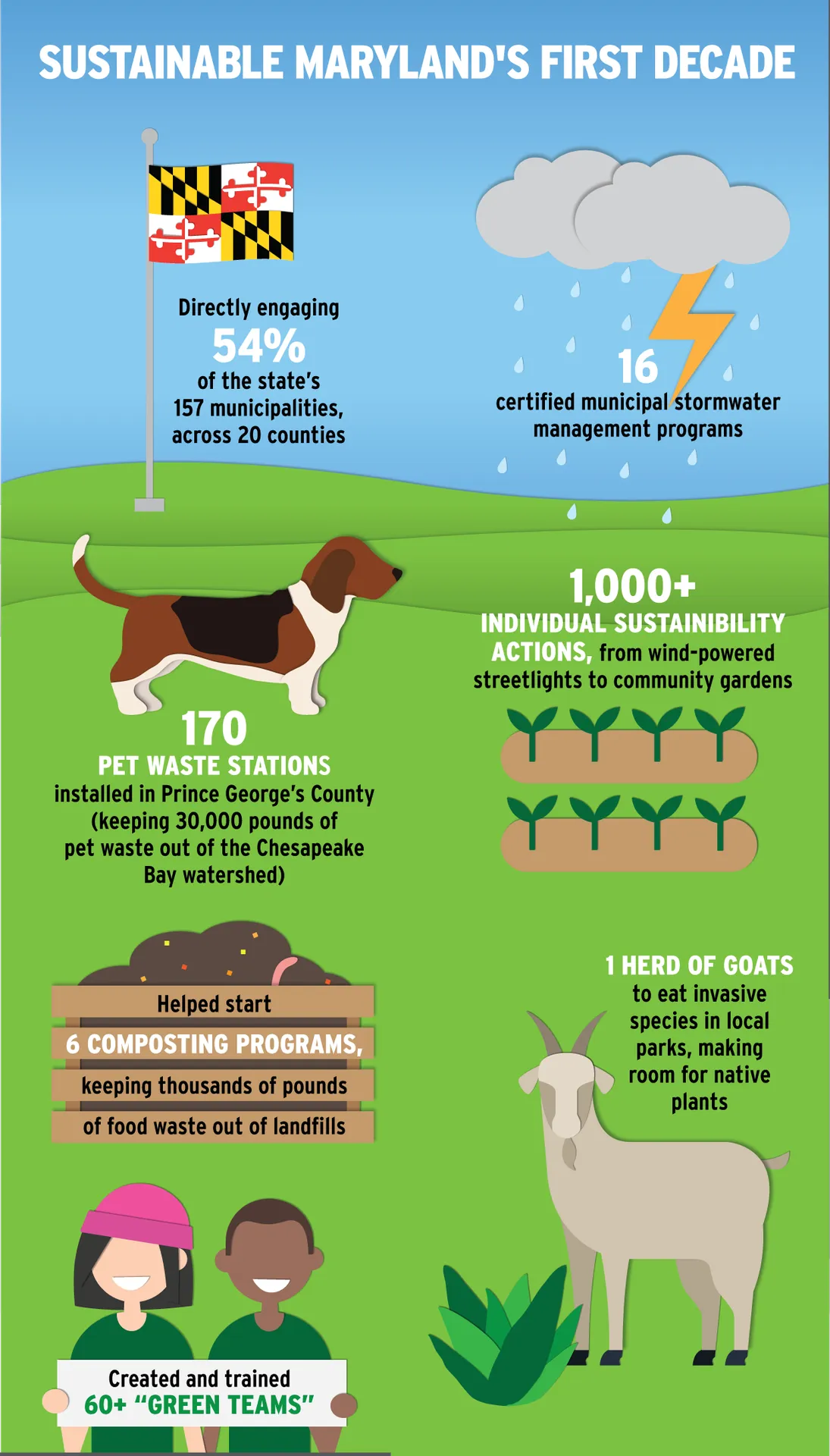- September 30, 2021
- By Maggie Haslam
Gaze across the sprawling field of solar panels just west of Annapolis, and it’s hard to imagine that just underneath lies 80 acres of trash. Annapolis Solar Park is the largest solar project built on a capped landfill in the United States, cutting the city’s electric bill more than $100,000 a year—and for Annapolis, it’s part of a larger effort to create a greener, healthier community.
The city has had help. Annapolis is one of 85 municipalities and homeowner’s associations across the state enrolled in Sustainable Maryland (SM), a no-cost “greening” program from the University of Maryland’s Environmental Finance Center. Now marking its 10th anniversary, SM has mobilized sustainability efforts from New Carrollton to North Beach by connecting municipalities with funding opportunities, training, expertise and a tight-knit network of peer communities.
“Sustainability has become a way of life for us, and having SM help us develop a plan each year keeps us on track,” said Rod Barnes, town administrator for the town of Edmonston, who has leveraged SM’s guidance, training and network to develop $4.2 million in successful grants, funding 28 rain gardens, three public fruit orchards, a pet waste program and more.
Offering over 100 greening actions for communities to choose from, SM is a “choose your own adventure” in sustainability that equates to big numbers for Maryland—shrinking carbon footprints, protecting waterways and building resilient, healthier places to live. Here’s what 10 years of greening Maryland looks like, by the numbers:

